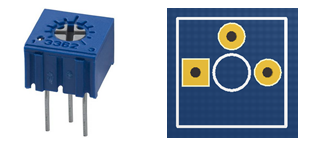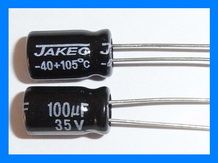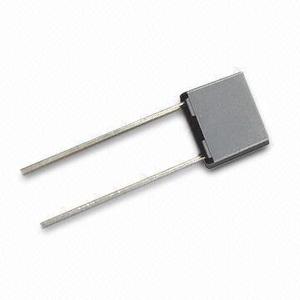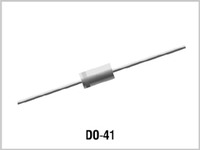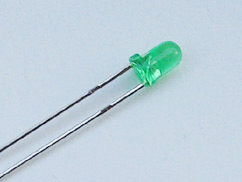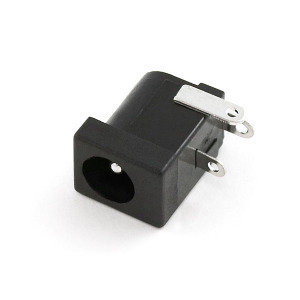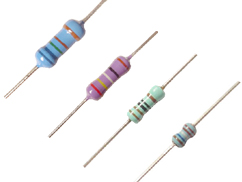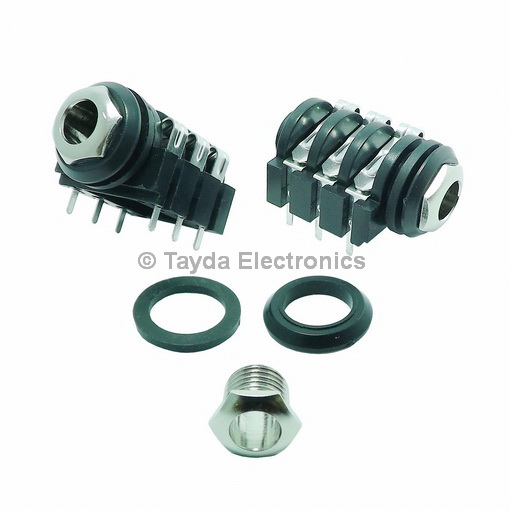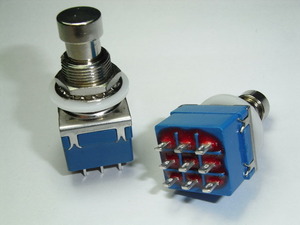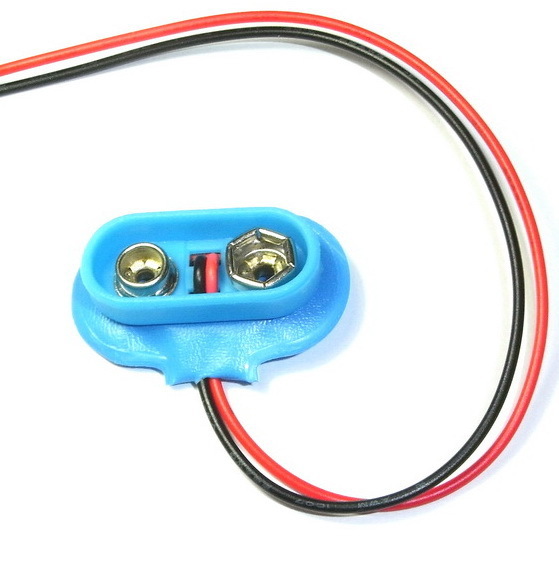Protoboard for 1590B enclosure
This board simplifies building your DIY guitar pedal in a 1590B enclosure. Just build your effect circuit on the pre-perforated area of the PCB.Steps
Categories
Status: Active
Designators and components Step 2 of 4
COMPONENT LIST
PCB PROTOBOARD FOR 1590B ENCLOSURE DIY PCB GUITAR EFFECT
C1 100u 100UF 35V 105C RADIAL ELECTROLYTIC CAPACITOR 6X11MM
C2 100n 100NF 0.1UF 100V 5% POLYESTER FILM BOX TYPE CAPACITOR
D1 1N4001 1N4001 DIODE 1A 50V
D2 1N4001 1N4001 DIODE 1A 50V
R1 3.3k 3.3K OHM 1/4W 1% METAL FILM RESISTOR
R2 47 47 OHM 1/4W 1% METAL FILM RESISTOR
LED LED 3MM GREEN
DC DC POWER JACK 2.1MM BARREL-TYPE PCB MOUNT
JACK IN 6.35MM 1/4" STEREO INSULATED SWITCHED SOCKET JACK PCB
JACK OUT 6.35MM 1/4" STEREO INSULATED SWITCHED SOCKET JACK PCB
3PDT 3PDT STOMP FOOT / PEDAL SWITCH
BATTERY 9V 9-VOLT BATTERY CLIP / CONNECTOR SNAP
PCB
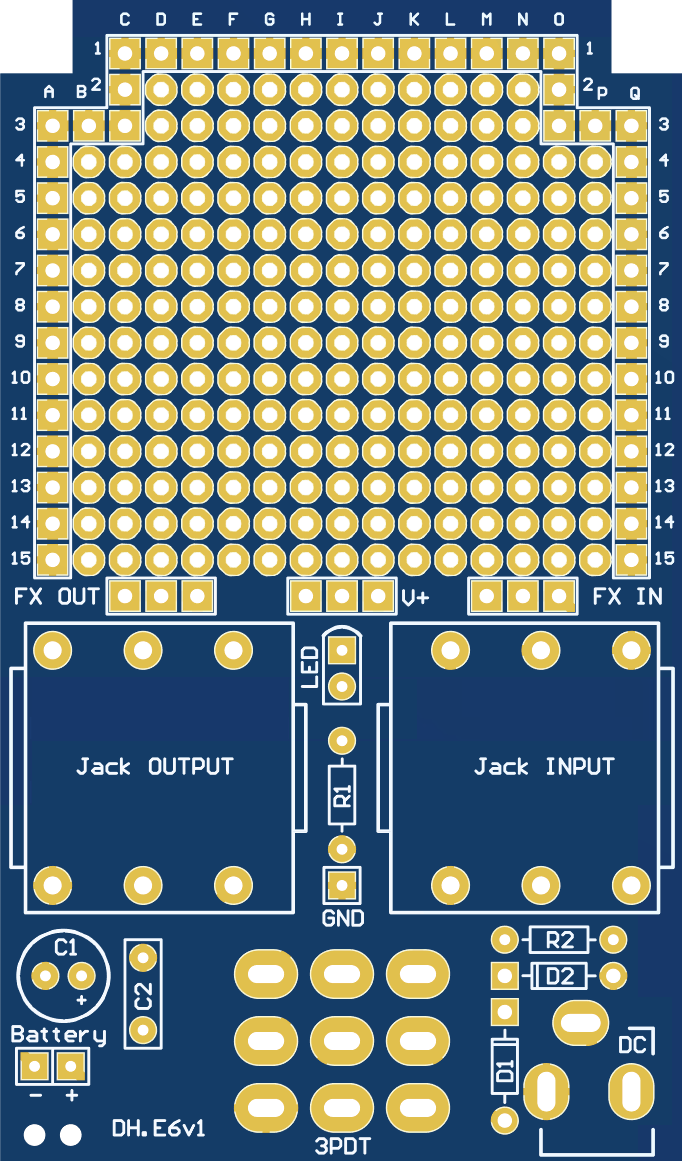
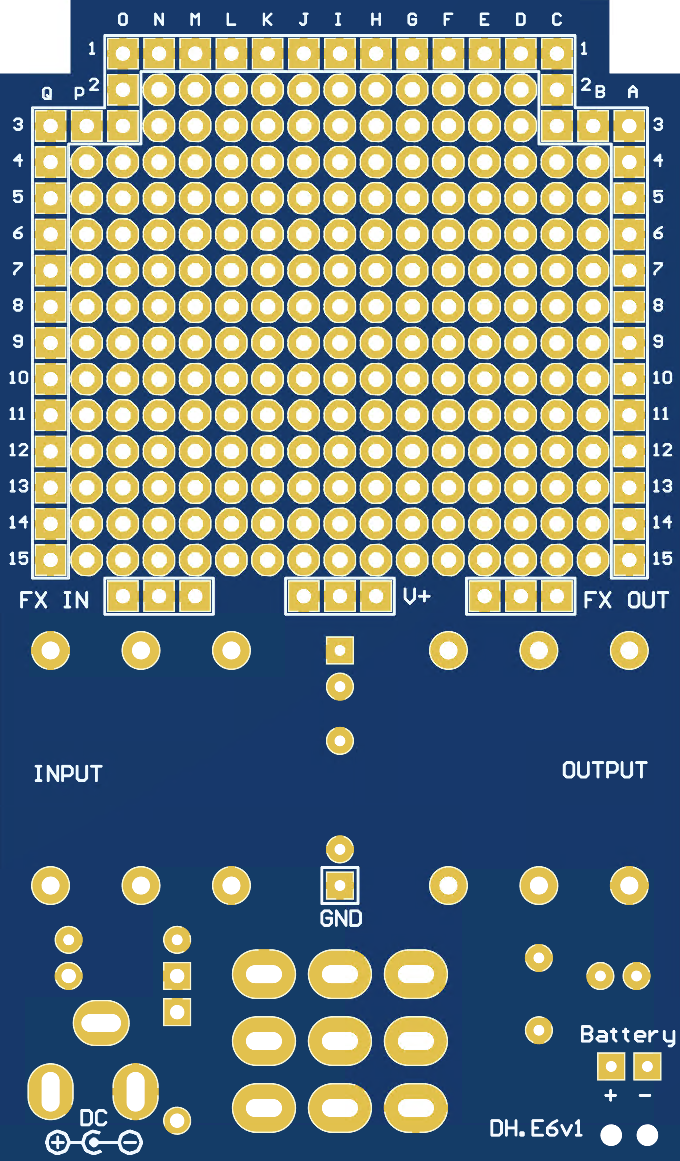
SCHEMATIC
The schematic for the DH.E6 is similar to the DH.E14.
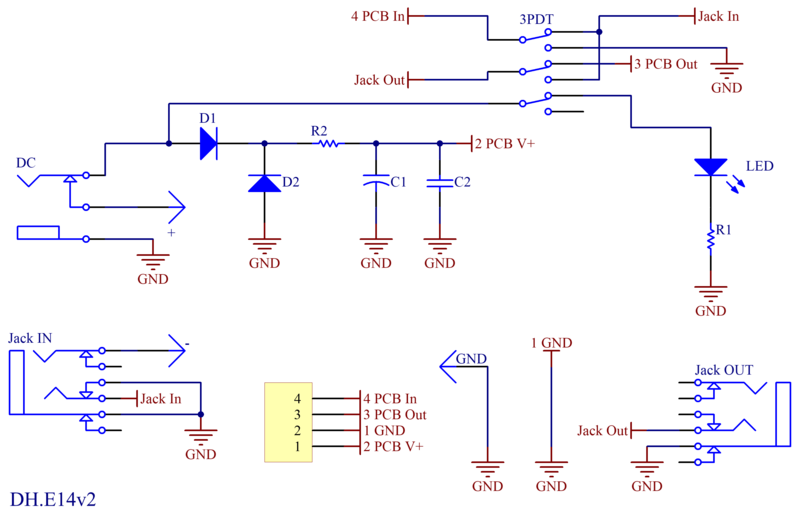
CIRCUIT DESCRIPTION
Diode LED
Resistor R1 acts as a current limiter for the LED. Select the resistance value to achieve the desired brightness. A range of 2.2kΩ to 4.7kΩ is recommended for standard LEDs.
Noise filter
Capacitors C1 and C2, paired with R2, filter noise from the power supply. To bypass this filter, omit C1 and C2 and replace R2 with a jumper.
R2 will drop the voltage reaching the effect PCB. Replacing R2 with a jumper will maintain the full power supply voltage, but with a less effitive noise filtering.
Reverse polarity protection
Diodes D1 and D2 provide reverse polarity protection. You can use D1 (for series protection) or D2 (for parallel protection), or both simultaneously.
- Series Protection (D1): Provides reliable protection by blocking current flow, but with a voltage drop (approximately 0.6V for the 1N4001 diode).
- Parallel Protection (D2): Has no voltage drop under normal operation. However, if the polarity is reversed, the diode can be damaged, potentially leading to component failure and requiring replacement.
If your effect PCB already has reverse polarity protection, you can omit D2 and replace D1 with a jumper.
GENERAL DESCRIPTION OF COMPONENTS
Resistors
Resistors don't have polarity, so you can place them in any direction. Determine their resistance value by using a multimeter or by reading the color bands.

Electrolytic capacitors
Electrolytic capacitors have their value and maximum voltage rating printed on the body. The negative pin is indicated by a white stripe along the can, and it also has a shorter leg. The longer leg is positive. Never exceed the maximum voltage rating. Ensure the capacitor's voltage rating is at least double that of your power supply (e.g., use an 18V capacitor for a 9V power supply).
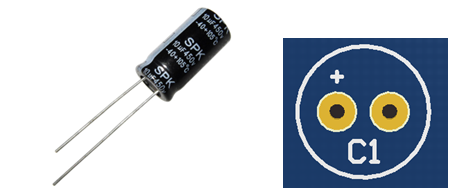
Polyester capacitors
Polyester capacitors don't have polarity and can be placed in any direction. Their value is marked using a three-number code. The first two numbers represent the first and second digits of the value, and the third number is the multiplier code (read in picofarads, pF).

Ceramic capacitors
Ceramic capacitors don't have polarity and can be placed in any direction. Their value is marked using a three-number code. The first two numbers represent the first and second digits of the value, and the third number is the multiplier code (read in picofarads, pF).
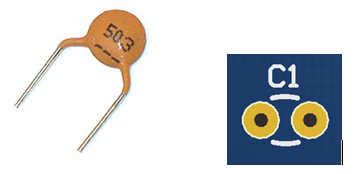
Tantalum capacitors
Tantalum capacitors have polarity. Their positive pin is marked on the component's body. The longer leg is also positive, and the shorter leg is negative. Install them according to the positive polarity (+) marked on the PCB.
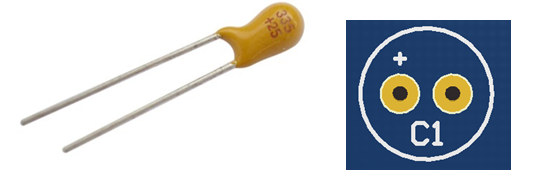
Integrated Circuits
Integrated Circuits (ICs) have their model number printed on them. A notch, a half-circle, or a small dot indicates the correct orientation on the PCB.
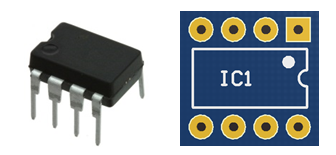
Diodes
Diodes have their model number printed on them. The polarity (cathode) is indicated by a stripe or ring near one end. This ring corresponds to the polarity marking on the PCB.
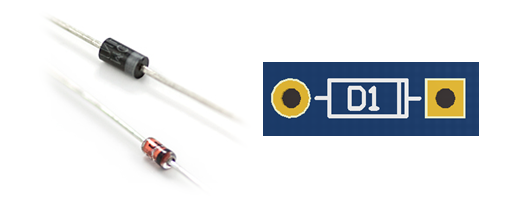
Led diodes
LEDs (Light Emitting Diodes) have polarity. The cathode is indicated by a flat edge on the side of the LED's plastic casing and a shorter leg. The longer leg is the anode. On the PCB, the cathode is marked with a flat side and the anode with a round side.

Transistors
Transistors are three-terminal components with their model number printed on them. To ensure correct orientation, one side of the transistor's body is flat while the other is curved.
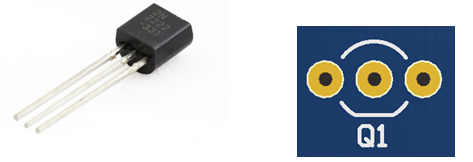
Potentiometers
Potentiometers have their resistance value marked on them. They are also marked with a letter to indicate their taper: A for logarithmic, B for linear, and C for reverse logarithmic.

Trimpots
Trimpots are similar to potentiometers but are smaller and mounted directly on the PCB. Their resistance values are printed on them. Use a small screwdriver to make adjustments.
